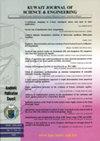Foliar application of chitosan improves plant biomass, physiological and biochemical attributes of rose (Gruss-an-Teplitz)
引用次数: 4
Abstract
Rose is an important floricultural crop that has been exploited for many uses. Its important uses in different industries include, pharmaceutical, perfumery, and food industries that manifest higher flower yield. Therefore, response of Gruss-an-Taplitz to foliar application of chitosan (Ct) solution (0, 2.5, 5, 7.5, 10 mg L-1), was evaluated in an experimental field. Ct treatment had significant effects on studied parameters, including plant growth, pigments, enzymes, and gaseous exchange. This experiment was laid out under Randomized Complete Block Design (RCBD) using three replications per treatment. Ct (7.5 mg L-1) significantly improved growth, in terms of higher leaf area (20.37%), plant height (20.19%), number of flowers (55.51%), flower weight (34.64%) and flower diameter (33.78%) as well as enhancing relative water contents (27.38%) with respect to control. Chlorophyll a (54.60%), Chlorophyll b (12.13%), Carotenoid (8.36%) and anthocyanins (17.09%) were also increased at 7.5 mg L-1 Ct, which showed higher photosynthetic pigments as compared to control. Consequently, Ct (7.5 mg L-1) treated plants showed higher enzymatic activity; CAT (9.94%), SOD (83.87%), POD (64.54%), total antioxidant (35.48%), phenolics (7.41%) and gaseous exchange; Pn (55.65%), E (31.76%), and gs (18.38%) Ci (34.17%) that improved the plant growth and productivity of Gruss-an-Taplitz. Foliar application of 7.5 mg L-1 Ct improved biomass, water preservation, pigments, enzymatic activity and leaf gaseous exchange, resulted in higher production and quality of Gruss-an-Taplitz plants.叶面施壳聚糖改善玫瑰生物量及生理生化特性
玫瑰是一种重要的花卉作物,已被开发用于许多用途。它在不同行业的重要用途包括,制药,香水和食品工业,表现出更高的花产量。因此,在田间试验中,研究了壳聚糖(Ct)溶液(0、2.5、5、7.5、10 mg L-1)对Gruss-an-Taplitz的响应。Ct处理对植物生长、色素、酶和气体交换等参数有显著影响。本试验采用随机完全区组设计(RCBD),每个处理3个重复。Ct (7.5 mg L-1)显著提高了对照的叶面积(20.37%)、株高(20.19%)、花数(55.51%)、花重(34.64%)和花径(33.78%),提高了相对含水量(27.38%)。在7.5 mg L-1 Ct处理下,叶绿素a(54.60%)、叶绿素b(12.13%)、类胡萝卜素(8.36%)和花青素(17.09%)含量均显著升高,且光合色素含量明显高于对照。结果表明,Ct (7.5 mg L-1)处理植株表现出较高的酶活性;CAT(9.94%)、SOD(83.87%)、POD(64.54%)、总抗氧化剂(35.48%)、酚类物质(7.41%)和气体交换;Pn(55.65%)、E(31.76%)和gs(18.38%)、Ci(34.17%)对草木生长和生产力有显著的促进作用。叶面施用7.5 mg L-1 Ct改善了草的生物量、保水性、色素、酶活性和叶片气体交换,提高了草的产量和品质。
本文章由计算机程序翻译,如有差异,请以英文原文为准。
求助全文
约1分钟内获得全文
求助全文
来源期刊

Kuwait Journal of Science & Engineering
MULTIDISCIPLINARY SCIENCES-
自引率
0.00%
发文量
0
审稿时长
3 months
 求助内容:
求助内容: 应助结果提醒方式:
应助结果提醒方式:


